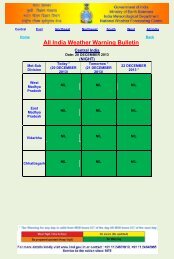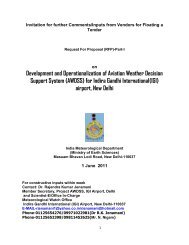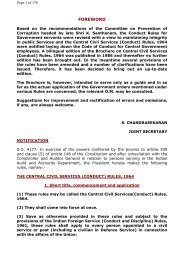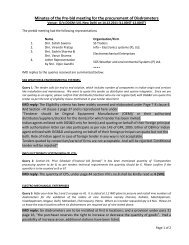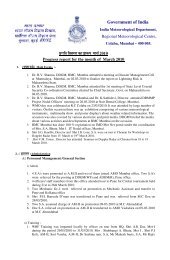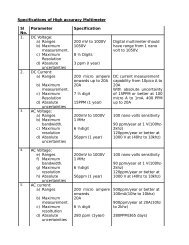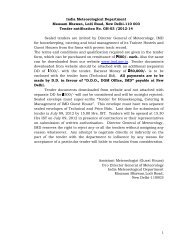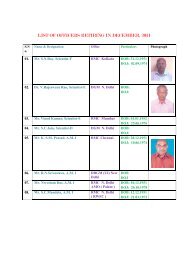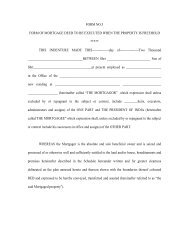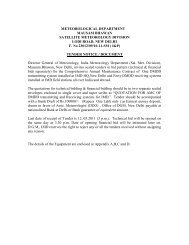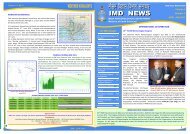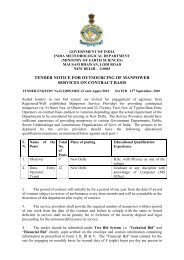Doppler Weather Radar - METNET - India Meteorological Department
Doppler Weather Radar - METNET - India Meteorological Department
Doppler Weather Radar - METNET - India Meteorological Department
Create successful ePaper yourself
Turn your PDF publications into a flip-book with our unique Google optimized e-Paper software.
2. Summary of the test method<br />
The antenna peak power will be observed at the forward power 30 dB coupler on the top of<br />
the pedestal, which feeds the Antenna. A test cable with calibrated loss will be used along with a<br />
calibrated Power Meter. A special test program will be used in the RCP8 computer to create<br />
constant Transmitter Triggers. The Peak power out will be measured.<br />
3. Test procedure<br />
Antenna Peak Power<br />
(1) Start the system and run the system in the normal operating state.<br />
Elevation<br />
Rotary Joint<br />
Directional<br />
Coupler<br />
Fixed Attenuator<br />
(30dB)<br />
RF<br />
Power Meter<br />
Figure C.5<br />
(2) Run the signal processor testing program, Set pulse width and PRF.<br />
(3) Press the “High voltage On” button to switch on high voltage.<br />
(4) Connect the RF power meter, Agilent N1921A, through a 30dB fixed attenuator to the<br />
forward power connector of the directional coupler as shown in the above Figure 17.<br />
(5) Measure the Peak RF Power.<br />
(6) Press the “High voltage Off” button to switch off high voltage.<br />
4. Test result<br />
PRF and peak power are to be measured for both long pulse and short pulse and recorded.<br />
C.3. ARC Detector Test<br />
This test is conducted to check the detector circuitry functionality.<br />
1. Perform RDA power-down procedures given in 6.52 of manual 510 (given below)<br />
2. Press the LOCAL/REMOTE CTRL switch on the Tx Control panel so that the local<br />
control indicator lights..<br />
3. Press the ARC TEST switch on the TX control panel.<br />
78



